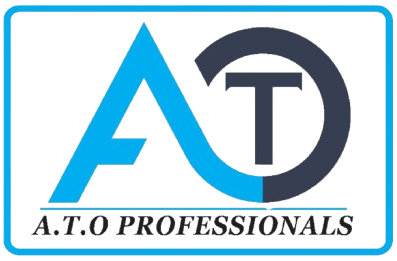In today’s competitive business landscape, hiring the right talent is more crucial than ever. An effective hiring strategy not only helps organizations attract and retain top talent but also aligns with their long-term goals and culture. A strategic approach to hiring ensures that your organization can adapt to market changes, maintain high employee engagement, and ultimately drive business success. Here’s how to develop an effective hiring strategy for long-term success.
1. Define Your Hiring Goals
Before you start the hiring process, it’s essential to clearly define your hiring goals. Consider the following questions:
- What are your current and future business needs? Understand the skills and roles that will be critical for achieving your organizational objectives.
- What does success look like? Outline the key performance indicators (KPIs) that will help you measure the success of your new hires.
- How does this role fit into your company culture? Identifying the cultural fit is just as important as skillset alignment. Ensure that your goals reflect your organization’s values and culture.
2. Create a Comprehensive Job Description
A well-crafted job description serves as the foundation of your hiring strategy. It should clearly outline:
- Key responsibilities and duties: Be specific about what the role entails.
- Required skills and qualifications: List the essential skills, experience, and education necessary for success.
- Company culture and values: Give candidates a sense of your organization’s culture and what you value as a team.
- Growth opportunities: Highlight potential career development paths within your organization.
A comprehensive job description helps attract candidates who are not only qualified but also align with your company culture.
3. Utilize Multiple Sourcing Channels
To cast a wider net and attract diverse talent, leverage various sourcing channels:
- Job Boards: Utilize popular job boards like LinkedIn, Indeed, and Glassdoor to post your openings.
- Social Media: Promote job openings on platforms like Facebook, Twitter, and Instagram. Social media is also an excellent way to showcase your company culture.
- Employee Referrals: Encourage current employees to refer potential candidates. Employees often have a good understanding of your culture and can identify those who would be a good fit.
- Networking Events: Attend industry conferences and networking events to connect with potential candidates face-to-face.
Using multiple sourcing channels increases your chances of finding high-quality candidates who fit your organization’s needs.
4. Streamline Your Hiring Process
A lengthy and complicated hiring process can deter top talent. Streamlining your hiring process enhances the candidate experience and ensures you don’t lose out on qualified candidates. Here are some tips:
- Establish a clear timeline: Define each stage of the hiring process and communicate timelines to candidates.
- Use technology: Consider using applicant tracking systems (ATS) and interview scheduling software to streamline processes and enhance efficiency.
- Involve the right stakeholders: Ensure that key decision-makers are involved in the hiring process to avoid delays and ensure alignment on candidate selection.
A well-organized hiring process makes it easier for candidates to navigate, increasing the likelihood of attracting top talent.
5. Focus on Candidate Experience
Providing a positive candidate experience is critical for building your employer brand. Candidates often share their experiences, whether positive or negative, which can impact your organization’s reputation. To enhance candidate experience:
- Communicate openly: Keep candidates informed throughout the hiring process, from application receipt to interview scheduling and feedback.
- Provide constructive feedback: If a candidate is not selected, offer constructive feedback on their application or interview performance. This gesture can leave a positive impression and encourage them to apply for future roles.
- Be respectful of their time: Ensure that interviews are conducted promptly and professionally, valuing candidates’ time and effort.
A positive candidate experience can lead to a stronger employer brand and attract more talent in the future.
6. Prioritize Diversity and Inclusion
Incorporating diversity and inclusion (D&I) into your hiring strategy not only creates a more dynamic workplace but also drives innovation and creativity. To foster a diverse and inclusive hiring process:
- Set clear D&I goals: Define specific objectives for improving diversity within your organization.
- Ensure unbiased job descriptions: Use inclusive language and avoid jargon that may alienate certain candidates.
- Implement blind recruitment: Consider removing identifying information from resumes during the initial screening to minimize unconscious bias.
A commitment to D&I enhances your organization’s reputation and ensures that you are attracting a broad range of candidates with different perspectives and experiences.
7. Monitor and Measure Success
Once your hiring strategy is in place, regularly monitor and measure its effectiveness. Utilize key performance indicators (KPIs) such as:
- Time-to-hire: Measure the time it takes to fill a position from the moment the job is posted.
- Quality of hire: Assess the performance and retention rates of new hires to determine if they meet expectations.
- Candidate satisfaction: Gather feedback from candidates regarding their experience throughout the hiring process.
Regularly analyzing these metrics allows you to identify areas for improvement and adjust your strategy accordingly.
Conclusion
Developing an effective hiring strategy is an ongoing process that requires careful planning and execution. By defining clear hiring goals, creating comprehensive job descriptions, utilizing multiple sourcing channels, streamlining your hiring process, prioritizing candidate experience, fostering diversity and inclusion, and monitoring your success, you can create a robust hiring strategy that supports your organization’s long-term success.
Investing time and resources into your hiring strategy not only enhances your ability to attract top talent but also sets your organization up for sustained growth and achievement. In a competitive job market, a strategic approach to hiring will distinguish your organization as an employer of choice.




